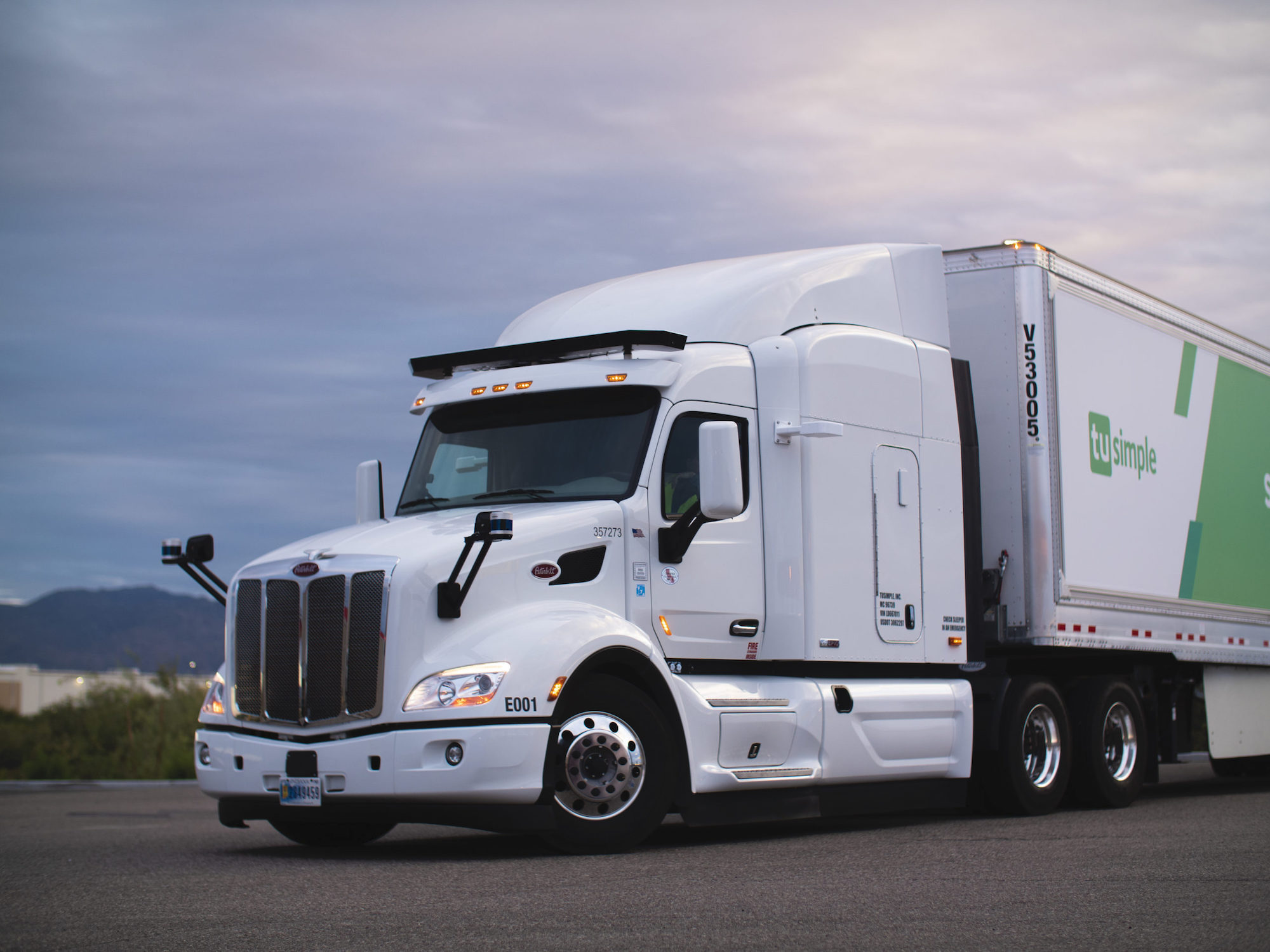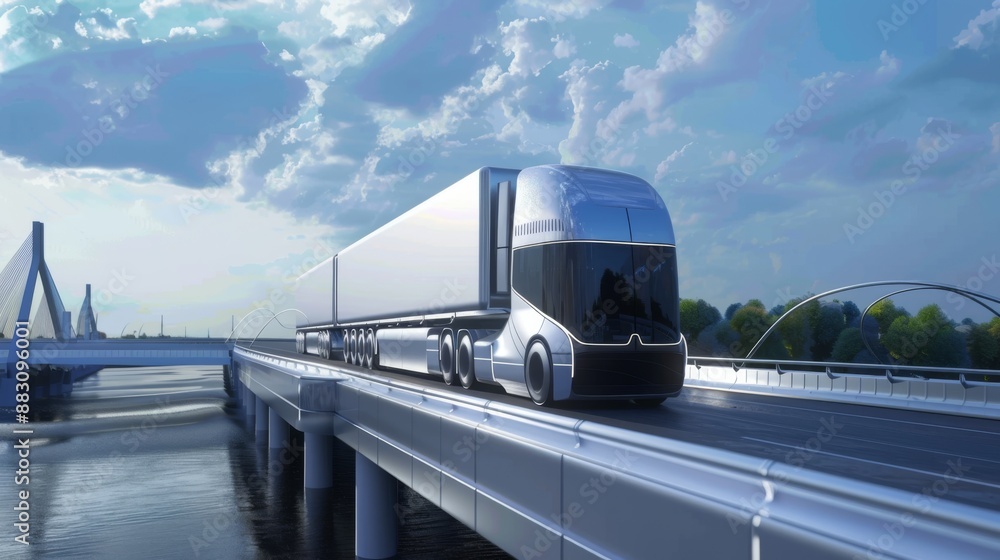Self-Driving Semi Trucks For Sale: Navigating the Future of Logistics pickup.truckstrend.com
The rumble of diesel engines and the sight of massive eighteen-wheelers dominating highways are iconic images of modern commerce. But a silent revolution is underway, poised to transform the very fabric of logistics: the advent of self-driving semi trucks. Once confined to the realm of science fiction, autonomous commercial vehicles are rapidly moving from experimental prototypes to viable, albeit still emerging, solutions. For forward-thinking fleet operators, logistics companies, and investors, the question is no longer "if," but "when" and "how" to acquire these transformative machines. This comprehensive guide delves into the nascent market of self-driving semi trucks for sale, exploring their benefits, the intricacies of acquisition, critical considerations, and what the future holds.
Understanding the Autonomous Frontier: What are Self-Driving Semi Trucks?
Self-Driving Semi Trucks For Sale: Navigating the Future of Logistics
At its core, a self-driving semi truck is a commercial vehicle equipped with advanced sensor arrays (LiDAR, radar, cameras), sophisticated artificial intelligence (AI) software, and powerful onboard computing systems that enable it to perceive its environment, make driving decisions, and navigate routes without direct human intervention. The capabilities of these trucks are classified by the Society of Automotive Engineers (SAE) into levels of autonomy, ranging from Level 0 (no automation) to Level 5 (full automation in all conditions).
Currently, most "self-driving" features available for purchase on new trucks fall into Level 2 or Level 3, which are advanced driver-assistance systems (ADAS). These include adaptive cruise control, lane-keeping assist, and automatic emergency braking, requiring constant human supervision. The true self-driving semi trucks, operating at Level 4 (high automation within specific operational design domains or ODDs, like highways) and the aspirational Level 5 (full automation everywhere), are primarily in pilot programs, limited commercial deployment, or still in advanced development. When we talk about "self-driving semi trucks for sale," we are largely discussing these higher levels of autonomy and the unique acquisition models associated with them.
The importance of these vehicles is immense. They promise to reshape the logistics landscape by offering solutions to critical industry challenges, enhancing safety, and unlocking unprecedented efficiencies.
The Compelling Benefits of Investing in Autonomous Fleets
The allure of self-driving semi trucks extends far beyond mere technological novelty. For businesses operating in the fiercely competitive logistics sector, the benefits translate directly into operational advantages and a significant return on investment.
-
Unprecedented Operational Efficiency:

- 24/7 Operation: Autonomous trucks are not bound by human hours-of-service (HOS) regulations. They can operate continuously, stopping only for refueling/recharging or maintenance, dramatically increasing asset utilization.
- Optimized Routing & Fuel Economy: AI-driven navigation systems can calculate the most efficient routes in real-time, avoiding traffic and road closures. Consistent, smooth acceleration and braking, free from human variability, can lead to significant fuel savings.
- Faster Delivery Times: Continuous operation and optimized routing mean goods can reach their destinations faster, improving supply chain responsiveness and customer satisfaction.

-
Significant Cost Reductions:
- Reduced Labor Costs: While initial deployments may still involve safety drivers, the long-term vision includes reduced reliance on human drivers for long-haul segments, addressing the persistent driver shortage and lowering labor expenses. Human drivers can then be re-tasked to last-mile delivery or supervisory roles.
- Lower Insurance Premiums (Projected): As autonomous systems demonstrate superior safety records by eliminating human error, insurance providers are expected to offer lower premiums for self-driving fleets.
- Decreased Wear and Tear: Consistent, optimized driving minimizes stress on vehicle components, potentially extending vehicle lifespan and reducing maintenance frequency.

-
Enhanced Safety on the Roads:
- Eliminating Human Error: The vast majority of truck accidents are attributed to human factors like fatigue, distraction, or impaired driving. Autonomous systems are tireless, always alert, and adhere strictly to traffic laws.
- Faster Reaction Times: AI can process information and react to hazards significantly faster than a human driver.
- Consistent Driving Performance: Autonomous systems maintain optimal following distances, lane positioning, and speed, contributing to overall road safety.
-
Addressing the Driver Shortage Crisis: The trucking industry faces a severe and worsening shortage of qualified drivers. Self-driving trucks offer a viable long-term solution to this critical bottleneck, ensuring the uninterrupted flow of goods.
-
Environmental Impact: Optimized driving behaviors, reduced idling, and the potential for greater adoption of electric powertrains in autonomous trucks contribute to lower carbon emissions and a smaller environmental footprint.
What to Look For: Key Considerations When Buying a Self-Driving Semi Truck
Acquiring a self-driving semi truck is not akin to purchasing a conventional vehicle. It’s an investment in a complex technological ecosystem. Careful consideration of several factors is paramount.
-
Autonomy Level and Operational Design Domain (ODD):
- Clarify Capabilities: Understand precisely what level of autonomy the truck offers. A Level 4 truck is restricted to specific ODDs (e.g., specific highway stretches) and conditions (e.g., clear weather). A Level 2/3 system is an ADAS package requiring active human supervision.
- Route Compatibility: Does the ODD of the autonomous system align with your primary freight routes? If not, the benefits may be limited.
-
Technology Stack and Redundancy:
- Sensors: Inquire about the type and number of sensors (LiDAR, radar, cameras, ultrasonic). Redundancy in sensor systems is crucial for safety and reliability.
- AI Software & Computing Power: The intelligence of the truck lies in its software. Understand the AI’s capabilities, its learning algorithms, and the robustness of the onboard computing hardware.
- Safety Redundancies: Does the truck have backup systems for steering, braking, and power in case of primary system failure?
-
Regulatory Compliance and Legal Framework:
- State-by-State Laws: Autonomous vehicle laws vary significantly by state and country. Ensure the truck is legal to operate on your intended routes.
- Evolving Regulations: The legal landscape is constantly evolving. Choose a provider committed to staying ahead of regulatory changes and providing updates.
- Liability: Understand the liability framework in case of an accident involving an autonomous vehicle.
-
Maintenance, Support, and Software Updates:
- Specialized Maintenance: Autonomous trucks require specialized diagnostics, calibration, and maintenance. Does the manufacturer offer comprehensive support, training for your technicians, or a service network?
- Over-the-Air (OTA) Updates: Software is critical. Ensure the truck can receive regular OTA updates to improve performance, add features, and address bugs.
- Data Management: How is the data collected by the truck handled? What are the privacy implications, and how can you access performance metrics?
-
Total Cost of Ownership (TCO):
- Beyond the Sticker Price: The purchase price is only one component. Factor in ongoing software subscription fees, data costs, specialized insurance, maintenance contracts, and the cost of necessary infrastructure upgrades (e.g., dedicated transfer hubs for Level 4 operations).
- Pilot Program Costs: Many Level 4 solutions are initially offered through pilot programs or as a service, which may involve different financial models than a direct purchase.
-
Integration with Existing Operations:
- Fleet Management Systems: How will the autonomous trucks integrate with your existing dispatch, tracking, and fleet management software?
- Human Workforce Adaptation: Plan for the re-skilling or re-tasking of human drivers and maintenance personnel.
The Purchase Process: How to Acquire a Self-Driving Semi Truck
Currently, buying a Level 4 or 5 self-driving semi truck is not like walking into a dealership. The market is primarily driven by partnerships, pilot programs, and a service-based model rather than direct, off-the-shelf sales.
- Identify Reputable Developers/Manufacturers: Companies like Waymo Via (Google’s autonomous trucking division), Aurora (which acquired Uber ATG and has partnerships with Volvo and PACCAR), Kodiak Robotics, Plus, and Embark (though recently acquired by a competitor) are leading the charge. Research their technology, partnerships, and deployment strategies.
- Engage in Pilot Programs or Strategic Partnerships: Many autonomous trucking companies are seeking strategic partners (large fleet operators, logistics providers) for pilot deployments. This allows you to test the technology in your specific operational environment with reduced risk and often includes significant support from the developer.
- Explore Service-Based Models: Instead of outright purchasing the truck, many providers offer "autonomy as a service." This model typically bundles the autonomous truck, software, maintenance, and support into a per-mile or per-load fee, reducing upfront capital expenditure.
- Consider Retrofit Solutions: Some companies offer kits to convert existing semi trucks into autonomous vehicles. While potentially cost-effective, ensure these retrofits are fully integrated, safe, and supported.
- Plan for Fleet Integration and Training: Regardless of the acquisition model, success hinges on seamless integration into your existing fleet and comprehensive training for your staff – from dispatchers learning new routing paradigms to technicians mastering autonomous system diagnostics.
Estimated Cost Components & Market Status for Self-Driving Semi Trucks (Hypothetical)
The pricing for self-driving semi trucks is highly speculative and dynamic, given the nascent stage of the market. Direct "for sale" prices for Level 4+ autonomy are rare, with many solutions offered as a bundled service. The table below provides hypothetical estimates to illustrate the potential cost components.
| Autonomy Level | Component | Estimated Cost Range (USD) | Notes | Availability Status |
|---|



